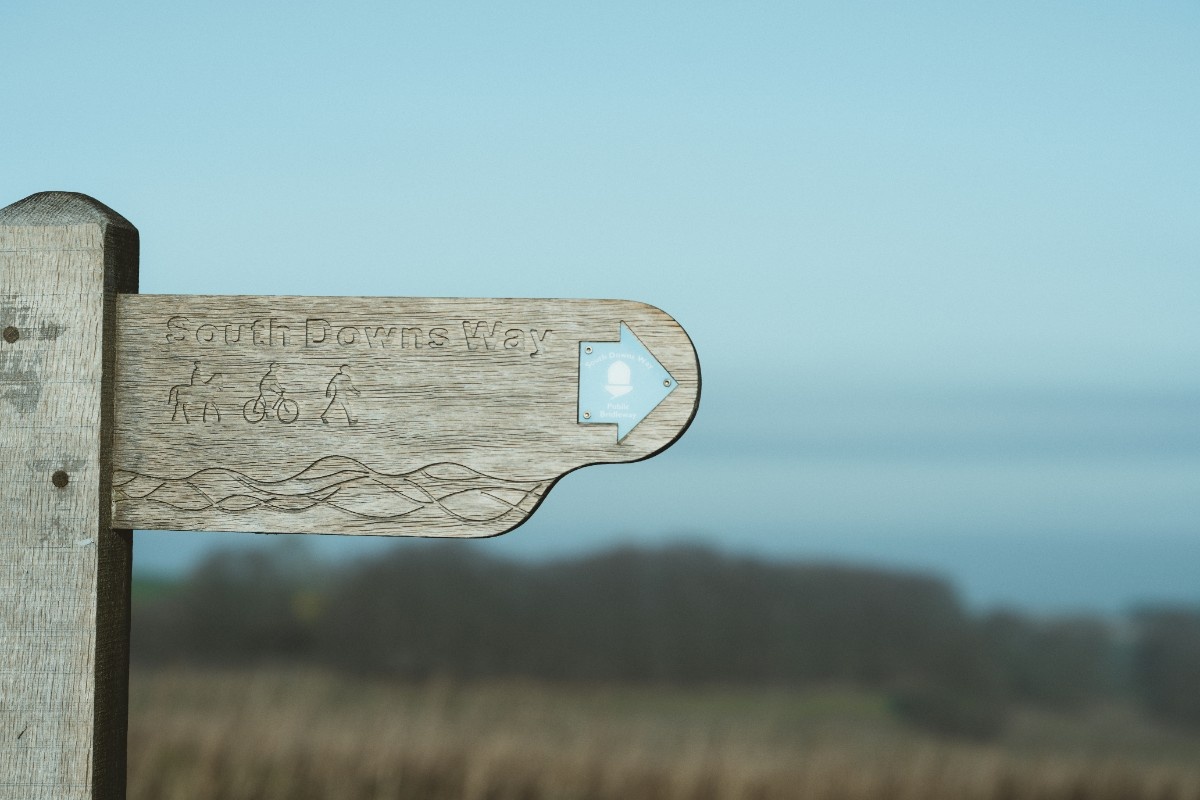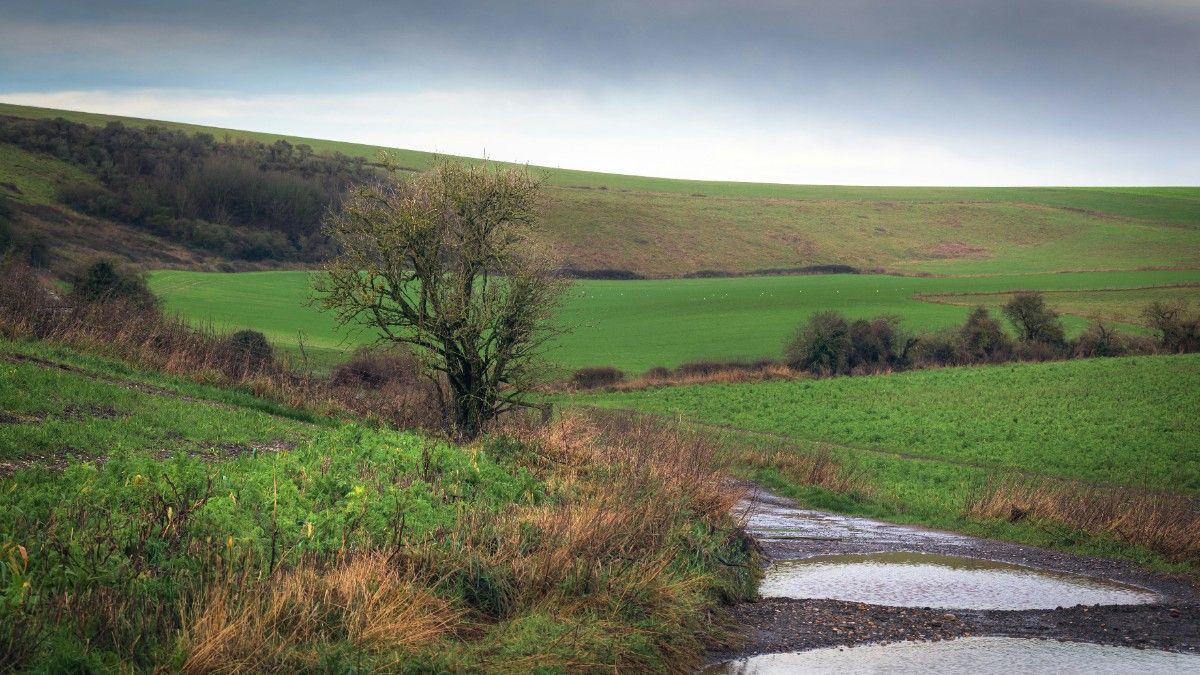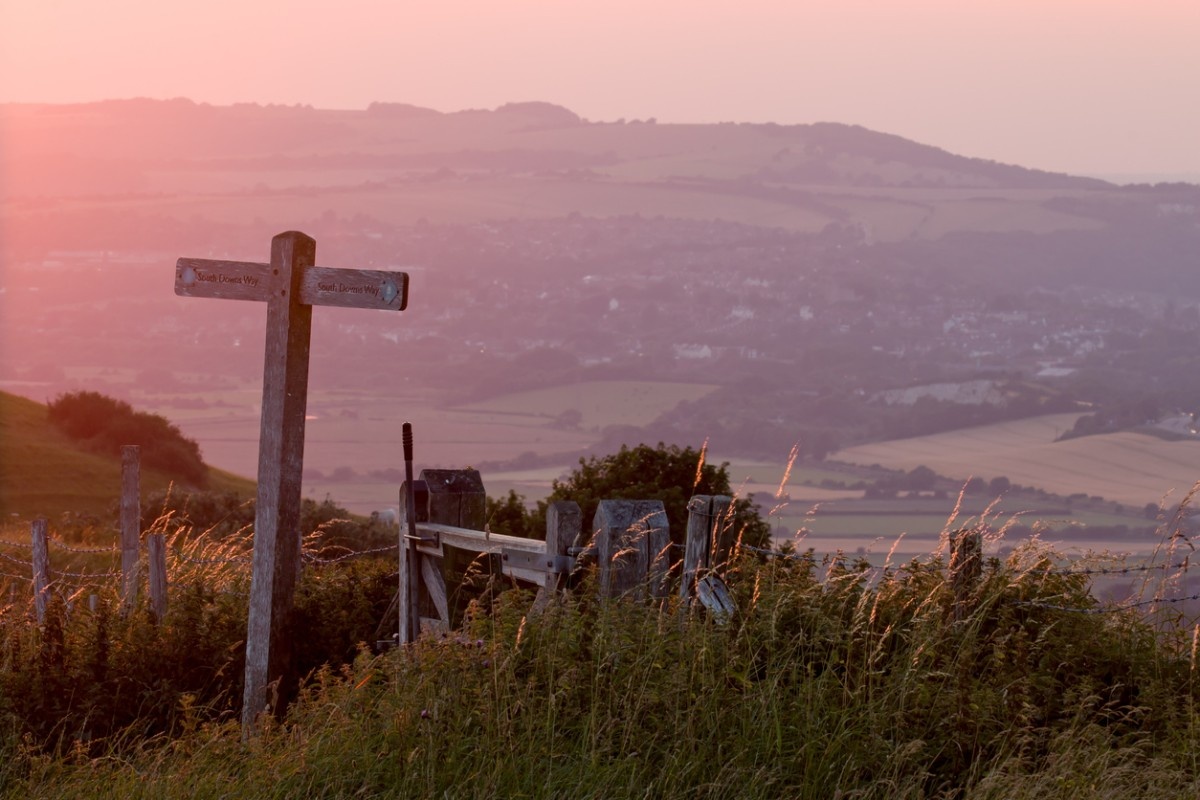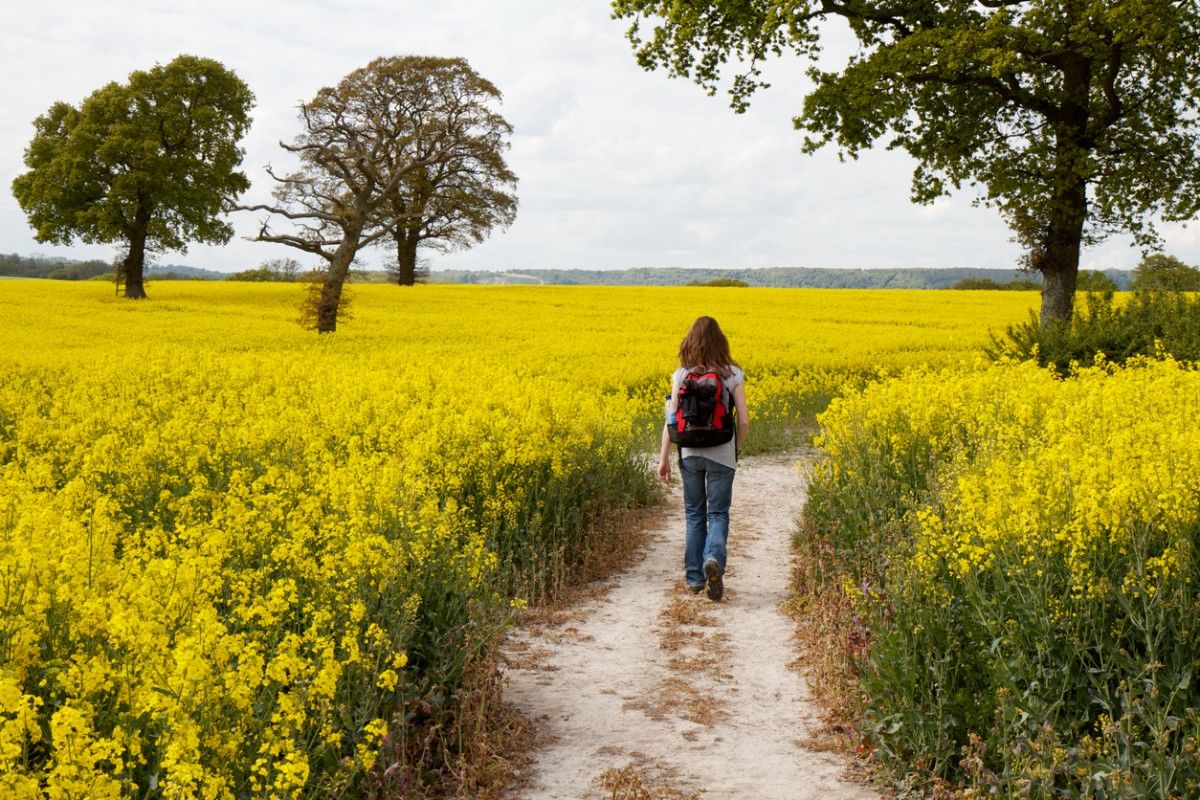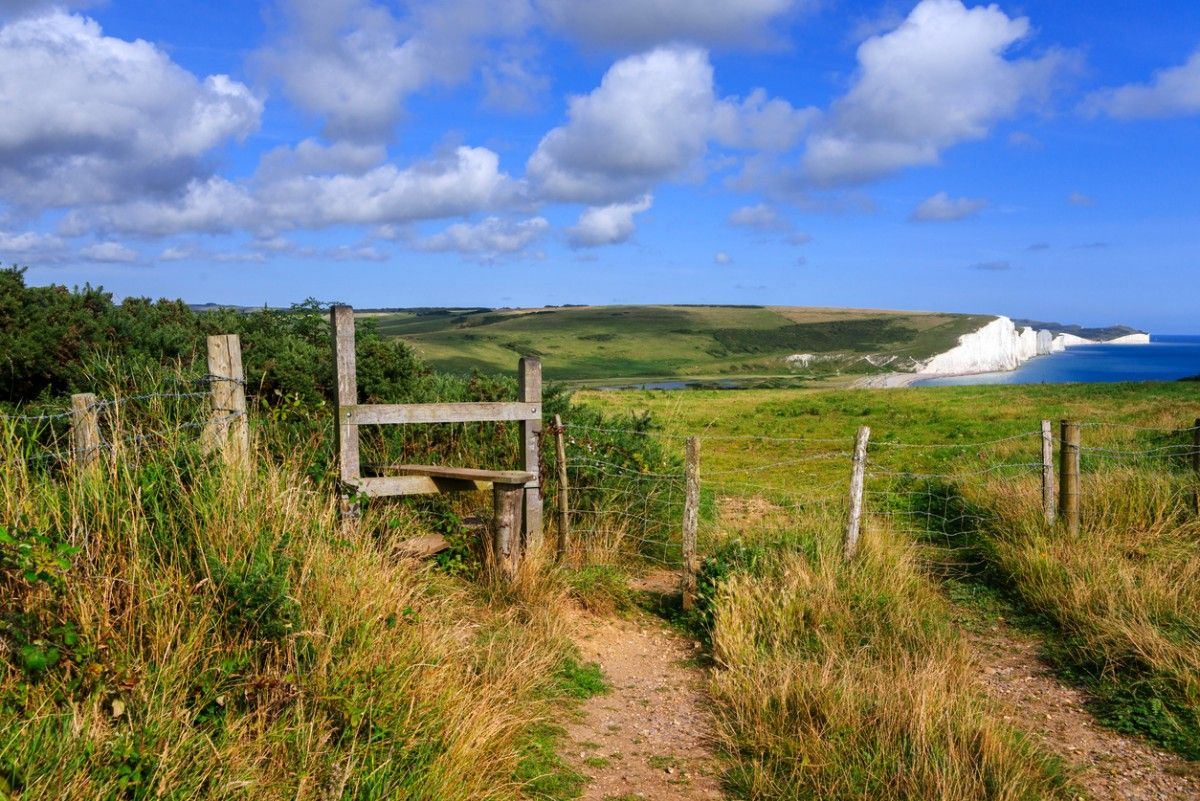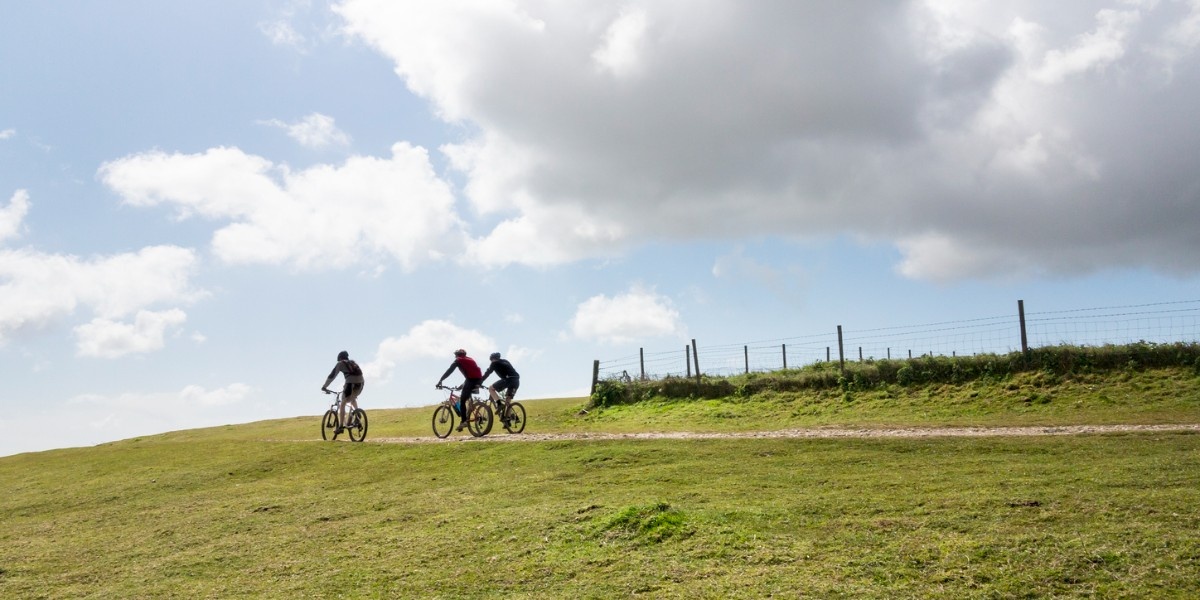Introduction to the South Downs Way
What is the South Downs Way?
The South Downs Way is a 100-mile (160-kilometre) long-distance footpath and bridleway that stretches across the stunning countryside of southern England. This iconic trail runs from Winchester in Hampshire to Eastbourne in East Sussex, traversing the length of the South Downs National Park. The South Downs Way is not only a popular route for walkers but also for cyclists and horse riders, offering a unique opportunity to explore the breathtaking landscapes of the region.
The trail follows the ancient chalk ridges of the South Downs, providing incredible views of the English Channel, rolling hills, and charming villages along the way. With its diverse scenery, rich history, and abundant wildlife, the South Downs Way attracts outdoor enthusiasts from around the world who seek to immerse themselves in the natural beauty and cultural heritage of this remarkable area.
A Brief History of the South Downs Way
The South Downs Way has a rich and fascinating history that dates back thousands of years. The route itself follows ancient tracks and droveways that have been used by humans for millennia, serving as important trade and transportation routes. The South Downs have been inhabited since prehistoric times, with evidence of human settlement dating back to the Neolithic period. Throughout history, the area has been shaped by various civilisations, including the Romans, Saxons, and Normans, each leaving their mark on the landscape and contributing to the region's unique cultural heritage.
The South Downs Way was officially established as a National Trail in 1972, becoming one of the first long-distance footpaths in England. Today, the trail is maintained by the South Downs National Park Authority and is enjoyed by thousands of visitors every year who come to experience the beauty and history of this extraordinary region.
Planning Your South Downs Way Adventure
Choosing Your Mode of Travel
When planning your South Downs Way adventure, the first decision you'll need to make is how you want to experience the trail. The three main options are walking, cycling, or horseback riding, each offering a unique perspective on the stunning landscapes and hidden gems along the route.
Walking the entire South Downs Way typically takes between 8 to 10 days, allowing you to fully immerse yourself in the natural beauty and rich history of the area. Cycling the trail is a more expeditious option, with most cyclists completing the route in 2 to 5 days, depending on their fitness level and the number of stops they make along the way. For those who prefer to explore the South Downs Way on horseback, the trail offers an unforgettable riding experience, with numerous bridleways and horse-friendly accommodation options available. Whichever mode of travel you choose, the South Downs Way promises an adventure you'll never forget.
Mapping Your Route
To ensure a safe and enjoyable journey along the South Downs Way, it's crucial to carefully study a detailed map of the South Downs Way before setting off. The official South Downs Way map, produced by Ordnance Survey, is an essential resource for planning your route and navigating the trail. This comprehensive map includes detailed information on the terrain, elevation changes, and key landmarks along the way, as well as the location of amenities such as accommodation, campsites, and refreshment points.
When planning your route, consider the distance you want to cover each day, the difficulty of the terrain, and the availability of services and facilities along the way. It's also a good idea to identify potential hazards, such as steep ascents or descents, and to plan your journey accordingly. By taking the time to carefully map your South Downs Way route, you can ensure a safe and rewarding experience on this iconic trail.
What to Pack for Your South Downs Way Trip
Packing the right gear is essential for a comfortable and safe journey along the South Downs Way. Your packing list will depend on various factors, including the time of year, the duration of your trip, and your chosen mode of travel. However, there are some essential items that every South Downs Way adventurer should bring, regardless of their specific plans. These include:
- Sturdy and comfortable footwear, such as hiking boots or walking shoes
- Breathable and moisture-wicking clothing layers to help regulate your body temperature
- Waterproof gear, such as a rain jacket and trousers, is also crucial, as the weather can be unpredictable along the trail
- A backpack
- A map and compass (or GPS device)
- First-aid kit
- Sunscreen
- Insect repellent
If you're planning to camp along the way, you'll also need to bring a tent, sleeping bag, and cooking equipment. By carefully considering your packing list and bringing the right gear, you can ensure a comfortable and enjoyable experience on the South Downs Way.
Accommodation Options Along the South Downs Way
Bed and Breakfasts and Guesthouses
One of the most popular accommodation options for those exploring the South Downs Way is staying in bed and breakfasts (B&Bs) or guesthouses. These establishments offer a comfortable and homely atmosphere, providing a perfect place to rest and recharge after a long day on the trail.
Many B&Bs and guesthouses along the South Downs Way are located in charming villages and towns, such as Buriton, Amberley, and Alfriston, allowing you to experience the local culture and hospitality. These accommodations typically offer comfortable bedrooms, en-suite bathrooms, and hearty breakfasts to fuel your adventures. Some B&Bs and guesthouses also provide additional amenities, such as packed lunches and drying facilities for wet gear.
When booking your accommodation along the South Downs Way, it's essential to plan ahead and make reservations well in advance, especially during peak season, to ensure availability and avoid disappointment. B&Bs and guesthouses are an excellent choice for those seeking a more personal and intimate experience while exploring this stunning trail.
Campsites and Camping Options
For outdoor enthusiasts who prefer a more immersive experience, camping along the South Downs Way is an excellent option. There are several well-maintained campsites strategically located along the route, offering a range of facilities and amenities for walkers, cyclists, and horse riders. These campsites typically provide basic facilities such as toilets, showers, and sometimes even electrical hook-ups for campervans.
Some popular campsites along the South Downs Way include Holden Farm Camping, Morn Hill Caravan and Motorhome Club Site, and Housedean Farm Campsite. When planning your South Downs Way camping adventure, it's important to note that wild camping is not permitted along the trail. All camping must be done at designated campsites, so it's crucial to plan your route and book your pitches in advance.
Camping offers a unique opportunity to fully immerse yourself in the natural beauty of the South Downs, allowing you to fall asleep under the stars and wake up to the sound of birdsong. Just remember to follow the "leave no trace" principles and respect the environment to help preserve this stunning landscape for future generations.
Pubs, Inns, and Hotels
For those who prefer a more traditional and comfortable accommodation option along the South Downs Way, there are numerous pubs, inns, and hotels located along the route. These establishments offer a range of rooms and amenities, from cosy pub rooms to more luxurious hotel suites.
Pubs and inns are particularly popular among walkers and cyclists, as they often provide a warm and welcoming atmosphere, delicious food, and a well-deserved pint after a long day on the trail. Many of these establishments are located in picturesque villages and towns, such as the historic market town of Lewes or the charming village of Alfriston, allowing you to explore the local sights and attractions.
When booking pubs, inns, or hotels along the South Downs Way, it's essential to make reservations in advance, particularly during the busier summer months. Some popular options include the Ye Olde George Inn in East Meon, the Kings Arms in Amberley, and the Plough and Harrow in Litlington. By choosing to stay in a pub, inn, or hotel, you can enjoy a comfortable and relaxing experience while exploring the stunning beauty of the South Downs Way.
Highlights and Points of Interest
Stunning Viewpoints and Landscapes
The South Downs Way is renowned for its breathtaking viewpoints and diverse landscapes, offering walkers, cyclists, and horse riders a truly unforgettable experience. As you traverse the undulating chalk ridges of the South Downs, you'll encounter numerous stunning vistas that showcase the natural beauty of southern England.
One of the most iconic viewpoints along the trail is Ditchling Beacon, the highest point in East Sussex, which offers panoramic views of the surrounding countryside and the English Channel. Another must-see spot is the Seven Sisters Country Park, where you can marvel at the striking white chalk cliffs that rise dramatically from the sea. The park also offers excellent opportunities for birdwatching and wildlife spotting, with a variety of seabirds, wildflowers, and butterflies calling this area home.
Other notable viewpoints include the tranquil Cuckmere Haven, the picturesque Amberley Mount, and the historic Beacon Hill. As you explore these stunning landscapes along the South Downs Way, take the time to pause, breathe in the fresh air, and appreciate the awe-inspiring beauty of this remarkable region.
Historical Sites and Ancient Monuments
In addition to its natural beauty, the South Downs Way is also steeped in history, with numerous ancient monuments and historical sites dotted along the route. These fascinating landmarks offer a glimpse into the region's rich cultural heritage and provide a unique opportunity to step back in time.
One of the most iconic historical features along the South Downs Way is the Chanctonbury Ring, an ancient hill fort dating back to the Iron Age. This mysterious site is surrounded by a circle of beech trees and is said to be haunted by the ghosts of Roman soldiers. Another must-see historical attraction is the Long Man of Wilmington, a mysterious chalk figure carved into the hillside near the village of Wilmington. This 235-foot (72-metre) tall figure is believed to date back to the 16th or 17th century and is a popular spot for photographers and history buffs.
Other notable historical sites along the South Downs Way include the Cissbury Ring, the largest Iron Age hill fort in Sussex, and the picturesque village of Amberley, with its charming thatched cottages and medieval castle. By exploring these fascinating historical landmarks, you'll gain a deeper appreciation for the rich cultural heritage of the South Downs and its enduring influence on the region.
Charming Villages and Towns
One of the great joys of exploring the South Downs Way is discovering the charming villages and towns that dot the route. These picturesque settlements offer a welcome respite from the trail, providing an opportunity to rest, refuel, and explore the local culture and hospitality. Many of these villages and towns boast a rich history, with ancient churches, traditional pubs, and quaint cottages lining the narrow streets.
Some notable villages and towns along the South Downs Way include the historic market town of Lewes, with its impressive Norman castle and vibrant arts scene, and the picture-perfect village of Alfriston, known for its charming thatched cottages and the famous St. Andrew's Church, also known as the "Cathedral of the Downs."
Other must-visit settlements include the bustling town of Petersfield, the tranquil village of Buriton, and the historic town of Arundel, with its stunning castle and picturesque River Arun.
As you explore these charming villages and towns along the South Downs Way, take the time to sample the local cuisine, chat with friendly locals, and immerse yourself in the unique character and atmosphere of each settlement. These encounters will undoubtedly enrich your experience and create lasting memories of your journey along this iconic trail.
Wildlife and Nature on the South Downs Way
Diverse Flora and Habitats
The South Downs Way traverses a variety of habitats, each supporting a unique array of flora and fauna. The iconic chalk grasslands that blanket the South Downs are particularly notable for their rich biodiversity. These grasslands are home to an incredible variety of wildflowers, including several species of orchids, such as the rare bee orchid and the pyramidal orchid, which bloom in a stunning display of colour during the spring and summer months. Other characteristic chalk grassland species include the vibrant yellow cowslips, the delicate harebells, and the striking oxeye daisies. As you walk or cycle along the South Downs Way, keep an eye out for these beautiful wildflowers and take the time to appreciate the intricate ecosystems they support.
In addition to the chalk grasslands, the South Downs Way also passes through ancient woodlands, such as the Kingley Vale National Nature Reserve, which boasts a remarkable collection of twisted and gnarled yew trees, some of which are believed to be over 2,000 years old. These woodlands provide a refuge for a wide range of plant species, including the ethereal bluebell carpets that emerge in the spring, and the vibrant yellow archangel that illuminates the woodland floor. By exploring these diverse habitats along the South Downs Way, you'll gain a deeper appreciation for the incredible natural beauty and ecological importance of this unique landscape.
Birds and Butterflies
The South Downs Way is a paradise for birdwatchers and butterfly enthusiasts, offering countless opportunities to spot a wide range of species throughout the year. The chalk grasslands and woodlands along the trail provide vital habitats for many birds, including the majestic peregrine falcon, the melodious skylark, and the elusive nightjar. As you walk or cycle along the route, keep your eyes peeled for these fascinating birds and listen out for their distinctive calls. The South Downs Way is also home to several species of owl, including the iconic barn owl and the mysterious tawny owl, which can often be heard hooting in the evening twilight.
In addition to its rich birdlife, the South Downs Way is also renowned for its incredible diversity of butterflies. The chalk grasslands along the trail support a wide range of butterfly species, including the rare Adonis blue, the striking Chalkhill blue, and the vibrant small copper. These beautiful insects can be seen fluttering among the wildflowers on warm summer days, adding an extra splash of colour to the already picturesque landscape. Other notable butterfly species to look out for include the marbled white, the dark green fritillary, and the silver-spotted skipper.
By taking the time to observe and appreciate the birds and butterflies along the South Downs Way, you'll gain a deeper understanding of the complex ecosystems that thrive in this unique and precious landscape.
Mammals and Reptiles
In addition to its diverse birdlife and butterfly populations, the South Downs Way is also home to a wide range of mammals and reptiles. As you traverse the undulating chalk hills and ancient woodlands, keep your eyes peeled for the iconic roe deer, which can often be spotted grazing in the early morning or late evening light. Other mammals to look out for include the elusive badger, the playful fox, and the charming brown hare, which can sometimes be seen bounding across the open grasslands.
The South Downs Way also supports a healthy population of bats, including the rare barbastelle bat and the more common pipistrelle bat, which emerge at dusk to hunt for insects along the woodland edges and over the chalk grasslands. Reptiles are another fascinating group of animals that inhabit the South Downs, with species such as the common lizard, the slow worm, and the adder (Britain's only venomous snake) all making their home along the trail. These elusive creatures can sometimes be spotted basking in the sun on warm rocks or hidden among the undergrowth. By keeping a keen eye out for these fascinating mammals and reptiles as you explore the South Downs Way, you'll gain a greater appreciation for the rich tapestry of life that thrives in this unique and precious landscape.
Cultural Heritage and History
Prehistoric Settlements and Ancient Monuments
The South Downs Way is steeped in history, with evidence of human habitation dating back thousands of years. As you walk or cycle along the trail, you'll encounter numerous prehistoric sites and ancient monuments that offer a fascinating glimpse into the lives of our ancestors.
One of the most significant prehistoric features along the South Downs Way is the abundance of Neolithic flint mines, such as those found at Cissbury Ring and Harrow Hill. These mines, which date back over 5,000 years, provide valuable insights into the sophisticated mining techniques and tool-making skills of our ancient forebears.
Another notable prehistoric site along the trail is the Chanctonbury Ring, an Iron Age hill fort that sits atop the South Downs, offering breathtaking views of the surrounding landscape. This ancient fortress is surrounded by a ring of beech trees and is steeped in mystery and legend, with some believing that it is haunted by the ghosts of Roman soldiers.
Other ancient monuments to look out for along the South Downs Way include the enigmatic Long Man of Wilmington, a giant chalk figure carved into the hillside, and the Devil's Jumps, a series of bronze age burial mounds that punctuate the undulating landscape.
By exploring these fascinating prehistoric sites and ancient monuments, you'll gain a deeper appreciation for the rich cultural heritage of the South Downs and the enduring human connection to this unique landscape.
Roman and Medieval Influences
As you continue your journey along the South Downs Way, you'll discover that the influence of the Romans and the medieval period has left an indelible mark on the landscape. The Romans, who invaded Britain in 43 AD, were drawn to the South Downs for its strategic importance and fertile soil. Evidence of their presence can be found throughout the region, from the remains of Roman villas and farmsteads to the network of ancient roads and trackways that crisscross the landscape.
One of the most significant Roman sites along the South Downs Way is the magnificent Bignor Roman Villa, which boasts some of the finest Roman mosaics in the country. As you explore this fascinating site, you'll gain a glimpse into the opulent lifestyle of the Roman elite and the sophisticated artistry of their mosaic craftsmen.
The medieval period also left its mark on the South Downs, with the construction of impressive castles, such as Arundel Castle and Lewes Castle, which serve as powerful reminders of the region's turbulent past. The South Downs Way also passes through numerous picturesque villages and towns that have their roots in the medieval period, such as the charming village of Alfriston, with its timber-framed houses and the impressive St. Andrew's Church, known as the "Cathedral of the Downs."
By immersing yourself in the Roman and medieval heritage of the South Downs, you'll gain a deeper appreciation for the rich tapestry of history that has shaped this unique and fascinating landscape.
Literary and Artistic Connections
The stunning landscapes and rich cultural heritage of the South Downs have long inspired writers, artists, and poets, many of whom have left their mark on the region. As you explore the South Downs Way, you'll discover numerous literary and artistic connections that add an extra layer of depth and meaning to your journey.
One of the most famous literary figures associated with the South Downs is the novelist Virginia Woolf, who lived at the nearby Monk's House in the village of Rodmell. Woolf drew inspiration from the beautiful landscapes of the South Downs, which feature prominently in her novels and essays.
Another notable literary connection is the poet Alfred, Lord Tennyson, who was a frequent visitor to the South Downs and wrote extensively about the region's natural beauty and rich history.
As you walk or cycle along the South Downs Way, you may also come across the work of contemporary artists and craftspeople who have been inspired by the stunning landscapes of the South Downs. The trail passes through numerous charming villages and towns that are home to galleries, studios, and workshops where you can discover unique pieces of art and craftsmanship that capture the essence of this special place.
By exploring the literary and artistic connections of the South Downs, you'll gain a deeper appreciation for the creative spirit that has been nurtured by this inspiring landscape for generations.
Cycling the South Downs Way
Preparing for Your Cycling Adventure
Cycling the South Downs Way is an exhilarating and rewarding experience that offers a unique perspective on the stunning landscapes and hidden gems of the South Downs National Park. To ensure a safe and enjoyable journey, it's essential to prepare thoroughly for your cycling adventure.
The first step is to choose the right bike for the terrain. The South Downs Way is best suited for mountain bikes or hybrid bikes with sturdy tires, as the trail can be rough and uneven in places. It's also crucial to ensure that your bike is in good working order, with well-maintained brakes, gears, and tires.
In addition to your bike, you'll need to pack essential gear and equipment, such as a helmet, gloves, a repair kit, and a first-aid kit. As you'll be cycling through remote areas, it's also a good idea to bring a map, a compass, and a GPS device to help you navigate the trail.
When planning your route, consider the distance you want to cover each day, the difficulty of the terrain, and the location of amenities such as campsites, pubs, and shops. By thoroughly preparing for your South Downs Way cycling adventure, you'll be able to fully immerse yourself in the breathtaking beauty of the South Downs and create unforgettable memories along the way.
Navigating the Trail and Respecting the Environment
As you cycle along the South Downs Way, it's essential to navigate the trail safely and responsibly, while also respecting the delicate environment of the South Downs National Park. The South Downs Way is well-signposted throughout, with clear waymarks and trail signs guiding you along the route. However, it's still a good idea to carry a detailed map of the South Downs Way and a compass or GPS device to help you navigate, especially in poor weather conditions or if you need to deviate from the main trail.
When cycling, always follow the countryside code and adhere to the "leave no trace" principles. This means staying on designated paths and bridleways, closing gates behind you, and taking your litter home with you. It's also important to be mindful of other trail users, such as walkers and horse riders, and to give them plenty of space and priority when passing.
The South Downs National Park is home to a wide variety of wildlife and sensitive habitats, so it's crucial to respect the environment and avoid disturbing the natural balance of the ecosystem. By navigating the trail safely and responsibly and respecting the environment, you'll help preserve the stunning beauty of the South Downs Way for future generations to enjoy.
Highlights and Challenges of Cycling the South Downs Way
Cycling the South Downs Way offers a wealth of highlights and challenges that make it a truly unforgettable experience. One of the greatest joys of cycling the trail is the opportunity to immerse yourself in the stunning landscapes of the South Downs, from the rolling chalk hills to the ancient woodlands and the dramatic coastal cliffs. Along the way, you'll discover charming villages and towns, each with their own unique character and history, where you can stop for a well-earned rest and a pint of local ale.
The trail also passes through numerous sites of historical and cultural interest, such as the Chanctonbury Ring, the Long Man of Wilmington, and the Cissbury Ring, which offer fascinating glimpses into the rich heritage of the South Downs.
However, cycling the South Downs Way is not without its challenges. The trail can be physically demanding, with steep ascents and descents that will test your fitness and endurance. The weather can also be unpredictable, with strong winds, rain, and even snow possible at any time of year. It's essential to be prepared for these challenges and to pace yourself accordingly, taking regular breaks and listening to your body.
Despite these challenges, the rewards of cycling the South Downs Way are immeasurable, offering a sense of achievement, a deeper connection with nature, and memories that will last a lifetime.
Conclusion and Final Thoughts
Reflecting on Your South Downs Way Journey
As you complete your journey along the South Downs Way, take a moment to reflect on the incredible experiences and memories you've created along the way. Whether you've walked, cycled, or ridden the trail, you'll have undoubtedly gained a deeper appreciation for the stunning beauty, rich history, and vibrant culture of the South Downs National Park.
You'll have challenged yourself physically and mentally, pushing beyond your comfort zone and discovering new strengths and capabilities. You'll have immersed yourself in the natural world, marvelling at the diverse landscapes, flora, and fauna that make the South Downs such a unique and precious environment. And you'll have connected with the people and communities along the way, sharing stories, laughter, and moments of kindness and generosity.
As you look back on your South Downs Way journey, take pride in your accomplishments and cherish the memories you've made. Whether you've completed the entire trail or explored a smaller section, you've been part of something truly special and have contributed to the rich tapestry of experiences that make the South Downs Way such an iconic and beloved trail.
Preserving the Beauty and Legacy of the South Downs Way
As you reflect on your journey along the South Downs Way, it's important to consider the role we all play in preserving the beauty and legacy of this unique and precious landscape. The South Downs National Park is a living, breathing ecosystem that depends on the care and stewardship of those who visit and enjoy it.
By following the countryside code, respecting the environment, and supporting local communities and businesses, we can all help ensure that the South Downs Way remains a vibrant and sustainable resource for generations to come. This means taking responsibility for our actions, whether it's disposing of litter properly, avoiding damage to sensitive habitats, or supporting conservation efforts and initiatives. It also means spreading the word about the incredible beauty and value of the South Downs, encouraging others to experience the trail for themselves and to cherish and protect this special place.
By working together and taking individual responsibility, we can help preserve the South Downs Way as a living testament to the power of nature, the resilience of the human spirit, and the enduring legacy of our shared heritage.
Parting Words and Encouragement for Future South Downs Way Adventurers
Whether you're a seasoned hiker, a keen cyclist, or a curious adventurer, the South Downs Way offers something truly special and unique. It's a trail that challenges us to push beyond our limits, to connect with nature and with each other, and to discover new depths of beauty, resilience, and joy.
As you plan your own South Downs Way adventure, whether it's a day trip or a full-length expedition, know that you are embarking on a journey that will change you in ways you never expected. Embrace the challenges, savour the moments of wonder and discovery, and let the trail guide you to new heights of personal growth and achievement. And when you reach the end of your journey, take a moment to look back on all that you've accomplished and all that you've learned. Know that you are part of a community of adventurers, united by a shared love of the outdoors and a deep respect for the natural world. And know that the South Downs Way will always be there, waiting to welcome you back with open arms and to offer you new adventures and new opportunities for growth and discovery.
Go forth with courage, with curiosity, and with an open heart, and let the South Downs Way be your guide to a life well-lived and a world well-loved.
Related Articles

Let us know you agree to cookies
We use marketing, analytical and functional cookies as well as similar technologies to give you the best experience. Third parties, including social media platforms, often place tracking cookies on our site to show you personalised adverts outside of our website.
We store your cookie preferences for two years and you can edit your preferences via ‘manage cookies’ or through the cookie policy at the bottom of every page. For more information, please see our cookie policy.

